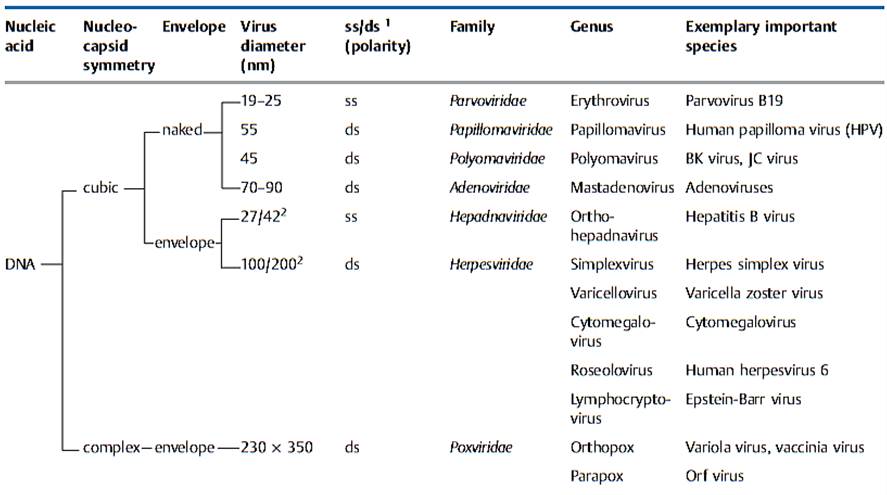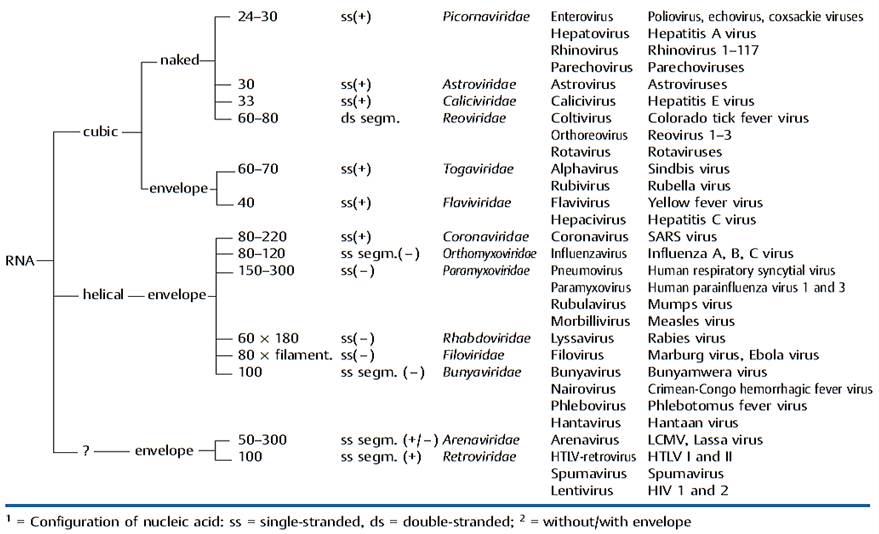


 النبات
النبات
 الحيوان
الحيوان
 الأحياء المجهرية
الأحياء المجهرية
 علم الأمراض
علم الأمراض
 التقانة الإحيائية
التقانة الإحيائية
 التقنية الحيوية المكروبية
التقنية الحيوية المكروبية
 التقنية الحياتية النانوية
التقنية الحياتية النانوية
 علم الأجنة
علم الأجنة
 الأحياء الجزيئي
الأحياء الجزيئي
 علم وظائف الأعضاء
علم وظائف الأعضاء
 الغدد
الغدد
 المضادات الحيوية
المضادات الحيوية|
Read More
Date: 19-11-2015
Date: 2025-03-18
Date: 18-11-2015
|
Classification of virus
The taxonomic system used for viruses is artificial (i.e., it does not reflect virus evolution) and is based on the following morphological and biochemical criteria:
-Genome: DNA or RNA genome (important basic differentiation of virus types!) as well as configuration of nucleic acid structure: single-stranded (ss) or double-stranded (ds); RNA viruses are further subclassified according to plus and minus polarity.
-Capsid symmetry: cubic, helical, or complex symmetry.
-Presence or absence of an envelope.
-Diameter of the virion, or of the nucleocapsid with helical symmetry.
The origins and evolution of the viruses are still largely in the dark. In contrast to the taxonomic systems used to classify the higher forms of life, we are therefore unable to classify viruses in such evolutionary systems. An international nomenclature committee groups viruses according to various criteria and designates these groups, analogously to the higher forms, as families, genera, and species. Despite this element of “artificiality” in the system now in use, the groups appear to make biological sense and to establish order in the enormous variety of known viruses (see Table 1, based on publications by the International Committee on Taxonomy of Viruses).
Table 1 Taxonomy of the Viruses


References
Fritz H. Kayser, M.D. Emeritus Professor of Medical Microbiology Institute of Medical Microbiology, University of Zurich, Zurich, SwitzerlandThieme 2005, Stuttgart ! New York.



|
|
|
|
4 أسباب تجعلك تضيف الزنجبيل إلى طعامك.. تعرف عليها
|
|
|
|
|
|
|
أكبر محطة للطاقة الكهرومائية في بريطانيا تستعد للانطلاق
|
|
|
|
|
|
|
أصواتٌ قرآنية واعدة .. أكثر من 80 برعماً يشارك في المحفل القرآني الرمضاني بالصحن الحيدري الشريف
|
|
|